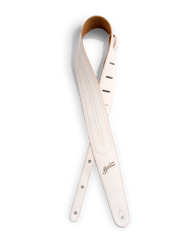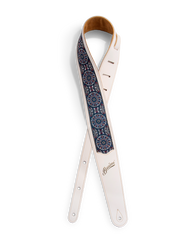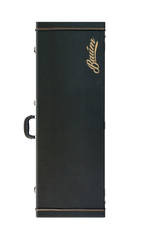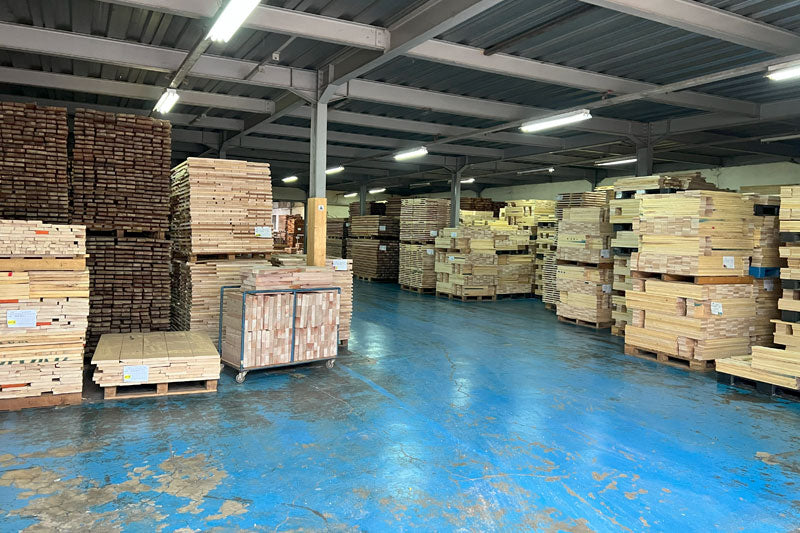Choosing mahogany, maple, and rosewood for signature tone.
This step is about sourcing the right type of wood and the first wood-work step which is processing it from raw wood into blanks that can be shaped into Baum instruments in step 03.
Everything begins with selecting the right types of wood. Working with wood is wonderful—it’s an organic material that shapes the instrument’s feel, weight, sound, and look. Due to its organic nature, each piece of wood has unique traits.
Selecting the right wood.
Through careful selection, we ensure the wood meets our strict quality standards, ensuring uniqueness stays within our acceptable tolerances, maintaining a consistent feel, sound, and quality.
We have a recipe that works wonderfully for the Baum electric style: Mahogany is chosen for our guitar and bass bodies, maple is baked (also known as roasted) for stability and that characteristic brown tint, while rosewood undergoes special treatments to enhance tone, feel, and stability. For our semi-hollow models, we add a piece of maple on top.
For our acoustics, you’ll find woods like American Sitka Spruce matched with Canadian Engelmann bracing, East-Indian rosewood, African mahogany, ebony, and more.

Preparing the wood from raw pieces.
The first step for wood-work is processing the wood from raw lumber to blanks.
But before the wood can be processed, it's important to let these kiln-dry or air-dry to the right moisture level.
Once dried, mahogany and maple pieces are cut so pieces and glued together to blanks and planed flat for the correct body thickness. Rosewood is cut to blanks and again cut to thinner pieces with correct fretboard thickness.
The maple used for necks are roasted (also called torrefied or baked) in a special low-oxygen kiln. This step removes moisture from the maple (which would normally take decades in a natural proces), it changes the color ranging from a more caramel or amber tone to a deep chocolate brown tone, and it makes the internal resins crystalize making the wood much more stable and less affected by humidity and string tension.
The wood is an essential part of the guitar, and we never compromise on quality.






